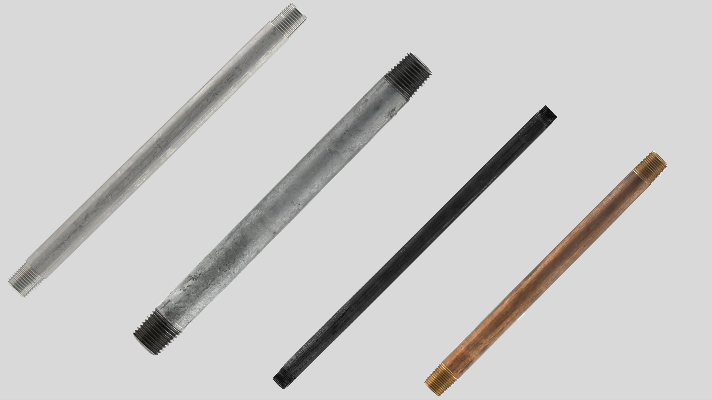A sump pump collects and eliminates water that accumulates beneath a basement floor. In other words, a sump pump prevents water from flooding your basement. A sump pump check valve improves the efficiency and prolongs the life of a sump pump.
In this blog post, we will discuss sump pump check valves and the benefits of installing one. We will also look at some connection types.
What is a sump pump check valve?

A sump pump check valve is a one-way, flapper style valve. It should be installed in the discharge pipe of the sump pump. When the pump starts, the force of the water opens the flapper and water is forced out through the valve. When the pump stops, the valve flapper closes, stopping the back-flow of water. A sump pump check valve ensures that water that has been pumped out does not come back into the pit.
Valves with a flat seat will make a clunking noise when the flapper fully closes. When the valve hits the seat, this impact is called water hammer. Choosing a valve with an angled seat will reduce the effects of water hammer and choosing a valve with a spring-loaded flapper will reduce it even more.
Why install a sump pump check valve?
There are a few reasons why you should install a sump pump check valve.
Pumping efficiency
Without a check valve, gravity will push the water in the discharge pipe back down into the pit. A check valve stops water from being pushed back down, and in turn, prevents the pump from having to re-pump water out. Having to re-pump water could result in short cycling.
Short cycling can happen when a check valve is installed incorrectly. If the check valve is installed incorrectly, such as high up on the discharge pipe, the water below the check valve will drain back into the basin and cause the water level to quickly rise. With this rising water, the pump will have to start again and over time, your pump will wear out from having to re-pump the same water out. Eliminating short cycling is better for the environment and saves on electricity costs.
Pump life
Short cycling causes the pump motor to run at a higher temperature. Heat is terrible for electric motors because it can drastically shorten the life of a pump. By installing a check valve, the risk of short cycling is reduced, and in turn, extends the life of the sump pump.
Connection types
There are five different connection types for connecting your check valve to the pump.
Threaded
 Threads are broken into two categories: male and female. Male threads are found on the outside of the pipe or fitting and female threads are found on the inside. If your pump has a threaded outlet, use a threaded check valve.
Threads are broken into two categories: male and female. Male threads are found on the outside of the pipe or fitting and female threads are found on the inside. If your pump has a threaded outlet, use a threaded check valve.
Barbed/insert

Barbed, also known as inserts, are inserted into tubing and stay snug because of their design. Barbs can be large, small, or more spaced out depending on the fitting and what it is intended to be used for. If you’ve used or plan to use a corrugated drain hose, then use a barbed check valve. Be sure to use a hose clamp in conjunction with the barbed connection.
Slip/spigot
 The slip, also known as the female connection of PVC fittings, is the wider end while the spigot, also known as the male connection, is the narrower end. If you’ve used or plan to use ridged PVC or any IPS (iron pipe size) piping, connect the slip/spigot check valve to the appropriate coupling for the pipe chosen.
The slip, also known as the female connection of PVC fittings, is the wider end while the spigot, also known as the male connection, is the narrower end. If you’ve used or plan to use ridged PVC or any IPS (iron pipe size) piping, connect the slip/spigot check valve to the appropriate coupling for the pipe chosen.
Flexible rubber coupling (rubber boot)

Flexible rubber coupling, also known as rubber boot, fits over a pipe and is attached by tightening the clamp. Instead of having to buy a slip/spigot check valve and a rubber coupling separately, a flexible rubber coupling offers these two items together.
Compression
 Compression connections are made up of three separate pieces. As you tighten the nut, pressure is put on the sleeve and secures the connection. For durability and easy installation, use a compression check valve.
Compression connections are made up of three separate pieces. As you tighten the nut, pressure is put on the sleeve and secures the connection. For durability and easy installation, use a compression check valve.
Installation tip
A sump pump check valve should be installed close to floor level to minimize the volume of water that drains back at the end of each pumping cycle. This location also allows for easy servicing of the valve.
In summary, without a sump pump check valve, your system has to work much harder to pump out the same amount. Installing a sump pump check valve helps to reduce the stress put on your sump pump, and thus, saves on energy costs and prolongs the life of the pump by limiting the amount that the pump has to run.
For more on sump pumps, check out our blog post on 5 must-have Plumbeeze products for every homeowner.



-1.png)

SHARE